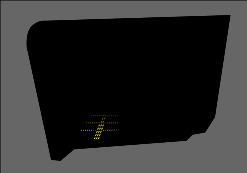
It's easier to recognise mistakes when you're not the one making them.

It's easier to sort out problems if you're not flying the aircraft.

It gives the best possible chance to get your most critical decision right

It's easier to make sure "junior" gets it right, than for "junior" to take control from you if YOU're wrong.
When crews use a "Monitored Approach" procedure:
In all conditions, approach management is improved by:
- Better crew interaction and teamwork in descent and approach planning
- Increasing the Pilot's capability to maintain situational awareness
- Providing better protection against "tactical errors" and "errors of omission".
- Reducing monitoring / challenging errors
- Better readiness and preparation for threat and error management
- Improving communication effectiveness between crew and ATC
- Reducing plan continuation errors
- Providing a "fail-safe" mental model for the PF
- Reducing "startle factor" if an unexpected go-around is needed.
- Providing additional safety measures to encourage practicing manual flying on highly automated types.
Read more about Approach Management....
In poor weather, approaching Decision Height / MDA
- Overall command capability is enhanced.
- The Pilot's situational awareness is better maintained.
- Premature transfer to misleading visual cues is minimised.
- There is more certainty of a positive decision AT Decision Height
- Unbroken monitoring of instruments can be assured
- In a continued approach to landing, the PM's callout reliability is enhanced.
- In a Go-around from DH, the PF is attuned to instrument flying and "primed" for the go-around.
Read more about visual transitions....
In all conditions, monitoring effectiveness is enhanced by
- Procedurally eliminating the "co-pilot's dilemma"
- Recognising the many factors in the cross-cockpit authority gradient
- Encouraging a conservative mind-set
- Discouraging risk-taking
- Minimising undesirable mitigation in communications
- Accepting that "monitoring" implies "supervision"
- Associating "monitoring" with accountability and authority
- Promoting monitoring as a fundamental active command role
- Building on strengths of both "authoritarian" and "individualistic" cultures.
- Reinforcing weaknesses in both "authoritarian" and "individualistic" cultures.
- Addressing many other cultural inhibitions.
Read more about improving monitoring effectiveness....